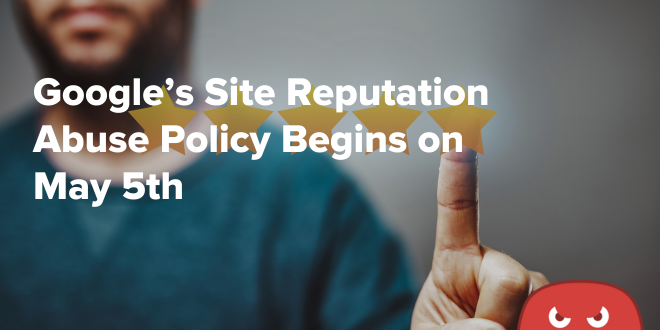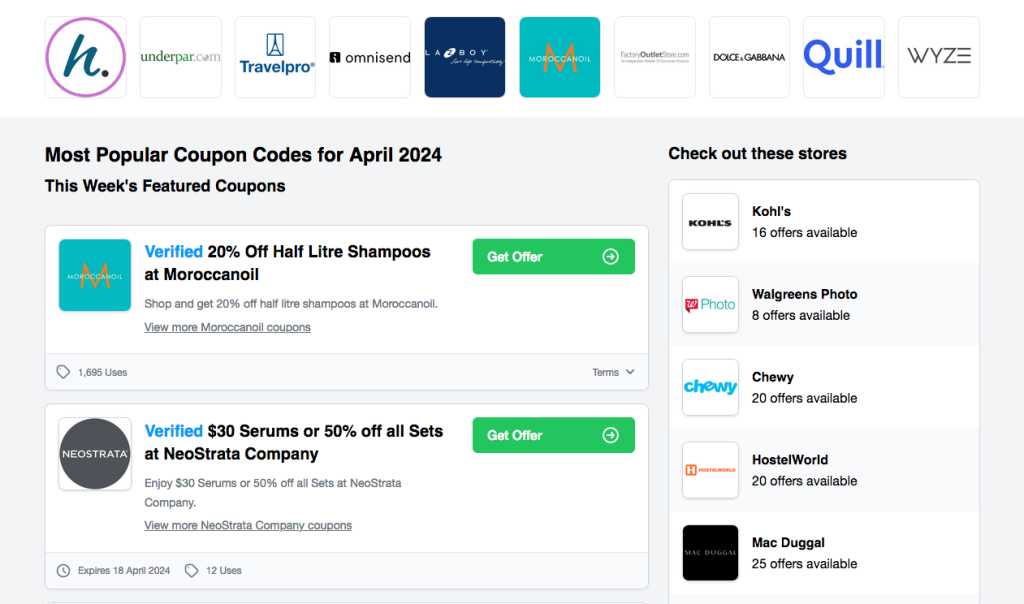
Google has been on the warpath against spammy content since releasing its most recent Core Update in March 2024 (which also contained updates to its spam policies).
The company declared it would wipe out 40% of the spam currently in its index, which reinforces Google’s confidence in its spam-fighting systems.
Among the new policies was the ‘site reputation abuse’ policy.
Its goal is to crack down on websites that post low-quality, third-party pages in an attempt to manipulate search rankings.
However, the policy doesn’t become official until May 5th.
The reason for the delay?
Google wanted to give site owners a fair warning on this one, which is why they announced the policy update months in advance. Theoretically, this should give site owners enough time to remove any spammy third-party pages on their sites (more on this in a bit).
They also confirmed that they plan on fighting site reputation spam with both manual actions (delivered by humans) and search algorithms (handled by machines).

Manual actions are serious business, and may cause your content to disappear from the SERPs entirely. Algorithm enforcement is a bit less harsh (they devalue the ranking power of the web pages instead of de-indexing them), but can still be devastating to your rankings.
Will the site reputation abuse policy affect your website?
Read on to learn everything you need to know, including how to prepare for the new policy.
What is Site Reputation Abuse?
Here’s how Google explains what they deem to be site reputation abuse:
“Sometimes websites that have their own great content may also host low-quality content provided by third parties with the goal of capitalizing on the hosting site’s reputation.”
They also provide an example of a third-party publishing payday loan reviews on an educational website.
Since the educational website is already trusted by Google and regularly receives high rankings for virtually all its content, the low-quality third party pages will get to tag along for the ride.
SEOs (search engine optimizers) have long had a term for this practice: parasite SEO.
You can think of these spammy third party web pages as Remoras, the tiny fish that attach themselves to large sharks in order to feed on their leftovers.
These third-party pages act in the same manner, except they mooch off the hosting website’s traffic and search rankings.
Google despises this practice because it floods its search results with spammy, garbage content that provides no value to users (which has been a massive problem for them lately).
The site reputation abuse policy applies to all third-party content on websites, including sponsored, advertising, and partnered content.
Do you need to get rid of all third party content on your site?
Does this mean that all third-party content is bad?
Not at all.
Google clarifies that site reputation abuse only occurs when “third-party pages are published with little or no first-party oversight or involvement, where the purpose is to manipulate Search rankings by taking advantage of the first-party site’s ranking signals.”
So, if you have some high-quality sponsored or partnered content on your site that you directly oversaw (and is relevant to the rest of your website), you won’t have much to worry about.
Google is only concerned with low-quality third-party content that provides no value to users and is completely unrelated to the first-party website’s purpose.
That means you won’t have to panic and delete all the guest posts on your blog (as long as they’re relevant) or all the sponsored posts from influencers.
Remember, Google will have a team of humans and machines reviewing each website, and its algorithm has become quite adept at identifying spam. If your third-party content truly is relevant and valuable, you shouldn’t need to delete it.
Real-World Examples of Site Reputation Abuse
What type of content does Google deem as site reputation abuse?
There are a few real-world examples we can point to, and it even seems as if Google was hinting at them with some of its comments.
For example, Google provides this example, “A sports site hosting a page written by a third-party about “workout supplements reviews,” where the sports site’s editorial staff had little to no involvement in the content and the main purpose of hosting the page is to manipulate search rankings.”
This almost certainly refers to the AI-generated scandal Sports Illustrated found itself in in November of last year.
Technology news website Futurism found AI-generated product reviews with fake authors on Sports Illustrated’s website.
Here’s one of the deep faked author profiles:

Yep, that’s a completely fake person.
The bogus reviews and author profiles were provided by a third party called AdVon, which runs E-commerce product reviews for Sports Illustrated.
When pressed, the team at The Arena Group (which owns the publishing rights to SI) claimed they had no idea that AdVon was using AI-generated content.
Remember that part in Google’s policy about wanting to remove spammy third-party content that has no first-party oversight or involvement? This is the exact type of scenario they were talking about.
Coupons, ********, and reviews
9 times out of 10, problematic third-party content has to do with coupon codes, ******** sites, and spammy product reviews (like the kind from Sports Illustrated).
Google has this to say about news sites featuring coupons:
“A news site hosting coupons provided by a third-party with little to no oversight or involvement from the hosting site, and where the main purpose is to manipulate search rankings.”
For instance, the major news website USA Today has a subdomain containing an intricate coupon network, which may land the site in *** water with Google come May 5th.

How to Prepare for the Site Reputation Abuse Policy
Okay, now that you know what the site reputation abuse policy is all about, what should you do about it?
First, remember these two key qualifying factors:
- For third-party content to qualify as spam, there has to be little to no oversight or involvement from the first-party website.
- The content must provide no value to users and must be completely unrelated to the first-party website.
If your sponsored, advertising, or partnered content doesn’t contain these factors, you shouldn’t have anything to worry about.
However, if you do have questionable third-party content that’s piggybacking off your established trust with Google, you’ll have to either:
As long as you do both before May 5th, you should be in the clear.
Wrapping Up: Google’s New Spam Policy Coming Soon
To summarize, Google’s site reputation abuse policy becomes official on May 5th, and the company will use a combination of manual actions and anti-spam algorithms to enforce it.
Google wants to remove low-quality third-party content that only exists to manipulate search rankings and line the pockets of first-party websites with good reputations.
If you directly oversee your sponsored content, this policy shouldn’t affect you.
Do you need help getting your SEO strategy in order?
Our managed SEO service, HOTH X, will pair you with a dedicated campaign manager who will ensure you comply with all of Google’s new spam policies.



